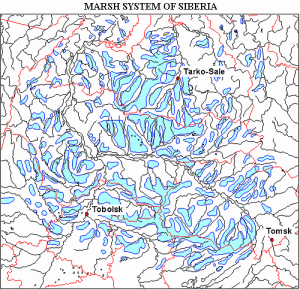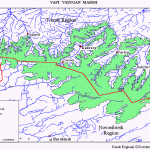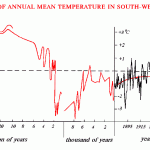Institute for Optical Monitoring, SB RAS, Tomsk
Head of the Institute:
Mikhail V.Kabanov, Corresponding Member of the RAS,
Doctor of Phys.-Math. Sciences
Tel.: (78-382 2) 259265, 259252,
Fax: 258950
email: kabanov@iom.tsc.ru
Principal researchers:
Institute for Optical Monitoring, SB RAS, Tomsk (IOM)
M.V.Kabanov, Corr.member of RAS, Director of IOM
V.A.Krutikov, Doctor of phys.-math. sciences, Head of the laboratory
I.I.Ippolitov, Doctor of phys.-math. sciences, Head of the laboratory
A.B.Pozdnyakov, Doctor of geographical sciences, Head of the laboratory
Institute of Atmospheric Optics, SB RAS, Tomsk (IAO)
G.G.Matvienko, Doctor of phys.-math. sciences, Director of IAO
Yu.N.Ponomarev, Doctor of phys.-math. sciences, Head of the laboratory
R.F.Rakhimov, Doctor of phys.-math. sciences, Principal researcher
Institute of Petroleum Chemistry SB, RAS, Tomsk (IPC)
V.G.Ivanov, Doctor of technical sciences, Deputy-Director on Science
A.K.Golovko, Doctor of chemical sciences, Deputy-Director on Science
O.V.Serebrennikova, Doctor of chemical sciences, Head of the laboratory
Geo-Information Systems Center at Tomsk Research Center, SB RAS, Tomsk (GIS-Center)
Yu.M.Polishchyuk, Doctor of phys.-math. sciences, Director of GIS-Center
Institute of Computational Mathematics and Mathematical Geophysics, SB RAS, Novosibirsk (ICMMG)
A.S.Alekseev, Academician, Director of ICMMG
V.V.Penenko, Doctor of phys.-math. sciences, Head of the department
Institute of Petroleum and Gas Geology, SB RAS, Novosibirsk (IPGG)
A.E.Kontorovich, Director of IPGG
S.L.Shvartsev, Doctor of geol.-mineral. sciences, Director of Tomsk Branch of IPGG
N.M.Passkazov, Doctor of geol.-mineral. sciences, Principal researcher, TB IPGG
V.P.Danilova, Cand. of geol.-mineral. sciences, Principal researcher of IPGG
Joint Institute of History, Philosophy, and Philology, SB RAS, Novosibirsk (JIHPhPhil)
N.N.Pokrovskii, Academician, Deputy-Director of IH
B.I.Molodin, Academician, Deputy-Director of IAEG
I.N.Gemuev, Doctor of hist. sciences, Deputy-Director of IAEG
Institute of Soil Sciences and Agrochemistry, SB RAS, Novosibirsk (ISSAC)
I.M.Gadzhiev, Corr.member of RAS, Director of ISSAC
S.V.Vasil’ev, Doctor of biol. sciences, Head of the laboratory
Joint Institute of Hydrodynamics, SB RAS, Novosibirsk (JIH)
A.F.Voevodin, Doctor of phys.-math. sciences, Head of the laboratory
Novosibirsk Institute of Organic Chemistry, SB RAS, Novosibirsk (NIOC)
G.A.Tolstikov, Academician, Director of NIOC
Instiutte of Cytology and Genetics, SB RAS, Novosibirsk (ICG)
N.A.Kolchanov, Doctor of biol. sciences, Deputy-Director on Science
Central Siberian Botanical Garden SB RAS, Novosibirsk (CSBG)
V.I.Valutskii, Senior researcher
Institute of Water and Ecological Problems, SB RAS, Barnaul (IWEP)
O.F.Vasil’ev, Academician, Adviser of RAS
Yu.I.Vinokurov, Doctor of geograph. sciences, Director of IWEP
Institute of Forest, SB RAS, Krasnoyarsk (IF)
E.A.Vaganov, Academician, Director of IF
S.V.Efremov, Doctor of biol. sciences, Head of the laboratory
Tomsk Affiliation of Institute of Forest, SB RAS, Tomsk (TA IF)
V.N.Vorob’ev, Doctor of biol. sciences, Director of TB IF
Tomsk State University, Tomsk (TSU)
G.V.Maier, Doctor of phys.-math. sciences, Rector of TSU
V.N.Stegnii, Doctor of biol. sciences, Deputy-Rector of TSU on Science
A.S.Revushkin, Doctor of biol. sciences, Deputy-Rector of TSU on Education
V.A.Zemtsov, Ph.D. (Geography), Head of department
A.M.Grishin, Doctor of phys.-math. Sciences, Head of the department
G.F.Plekhanov, Doctor of biol. sciences, Head of the department
A.T.Topchii, Doctor of historical sciences, Head of the department
I.V.Samokhvalov, Doctor of phys.-math. Sciences, Head of the department
L.A.Chindina, Doctor of histor. sciences, Head of the department
E.D.Lapshina, Doctoral student in biology
Siberian Physical Technical Institute at TSU, Tomsk (SphTI)
A.G.Kolesnik, Prof., Director of SphTI
V.A.Donchenko, Doctor of phys.-math. Sciences, Deputy-Director of SPhTI
A.V.Voitsekhovskii, Doctor of phys.-math. Sciences, Head of the department
Tomsk Polytechnic University, Tomsk (TPU)
A.I.Chuchalin, Doctor of technical sciences, Deputy-Rector on Education
B.K.Bernatonis, Ph.D. (Geol.-mineral.), assistant professor
Siberian Research and Development Institute of Turf, RAACS, Tomsk (SRDIT)
L.I.Inisheva, Doctor of agric. sciences, Head of the laboratory
Siberian Research and Development Institute of Geology, Geophysics, and Mineral Resources, Tomsk (SRDIGGMR)
V.G.Matukhina, Ph.D. (Geol-mineral.), Principal researcher
Research and Development Institute of Health Resort anf Physical Therapy, Tomsk (RDIHRPhT)
N.F.Levitskii, Doctor of medicine, Director of RDIHRPhT
Tekhnofit Co., Ltd, Tomsk (Tekhnofit)
V.S.Moskvin, Doctor of chemical sciences, Director
Project objectives
The total (strategic) purpose of the program is to show the part, importance, and research-justified ways for the development of this region for the stable development of Russia and the whole planet on the basis of fundamental and applied multidisciplinary investigations of one of the unique natural complexes in Western Siberia (VVM).
To achieve this general goal, we formulate a methodological task as the investigation of the VVM. We will develop research and methodical basis and create model technologies for complex monitoring and forecasting the regional changes under the effect of natural and anthropogenic factors. These techniques will supplement the traditional techniques, which monitor and forecast environment and climate state only.
Background and significance of objectives
Global changes of the environment and climate under increasing technogenic and demographic impact are commonly recognised nowadays. Investigations of these changes during the last decade resulted in a number of crucial conclusions. In particular, intensifying deterioration of the environment and climate changes has been emphasised, especially in the Northern Hemisphere.
At the same time, achievements in studying the global changes had only limited success (G.A.Zavarzin, V.M.Kotlyakov, Vestnik Ross. Akad. Nauk, No.1, 1998). Cause and effect relations of the climate and environmental changes observed, having the regional peculiarities, remain among the unresolved basic problems. There is no developed research basis for quantitative estimation of the part, which the anthropogenic factors (also having the regional peculiarities) play in the global and regional changes observed. In recent years scientists from many countries have shown the necessity of revising the strategy of studying both the Earth as a whole and global and regional changes in particular.
In the case being considered the grounds for drastic alterations in research investigation methodology rely on the progress in science and technology achieved during the last decade in fundamentally new investigation methods (sounding from space, remote laser sensing methods, computer simulations, etc.). It is just these grounds that have stimulated the development of a new concept of regional monitoring of changes in the Earth atmosphere at the Institute for Optical Monitoring, because the atmosphere is the most dynamic environmental system. The further development of this new concept could be the organisation of multidisciplinary investigations into the global, regional, or local changes of the many environmental components accounting for their interactions.
Fundamental and applied investigations of the global changes on the planet could not be considered apart from other fundamental problems connected with the rate and technologies of natural resources exploitation. The rate of exploitation determines the intensity of anthropogenic impact and, as a consequence, the rate of environmental and climate changes. The processing technologies and other kinds of resources exploitation define the rate and level of the corresponding regional and global changes. Increasing rate of natural resources exploitation and technologies of their utilisation demand the development of not only research basis for rational nature exploitation but also research basis for efficient restoration after technogenic impact or adaptation to changing conditions. Both problems are also connected with the necessity of conducting multidisciplinary investigations.
At the present stage, an urgent fundamental problem is the instrumental and geoinformation provision of the multidisciplinary investigations. Both understanding and measures undertaken on the geoinformation provision of the studies are now at a high level. Further technical revolution on instrumental support of the investigations has been understood to a lower extent. In a complex monitoring of not only the state of the environment, but also its changes (development processes), new, in principle, instrumentation is needed. Many of new research instruments and unique measuring complexes have been being operated in some research laboratories over the world just to demonstrate their capabilities instead of routine operation. Therefore creation of the test bed sites with a well developed infrastructure for testing the instruments and technologies for complex monitoring is of particular importance. Taking into account the nowadays situation, the Institute for Optical Monitoring, SB RAS is considered as such a base institution.
To solve both of the above-mentioned and accompanying basic problems, a number of meetings with the leading Siberian scientists have been pioneered by the Presidium of SB RAS and Tomsk Regional Administration and this project has been prepared as a result of this activity. The report on this project has been presented at the on-site visit of the Presidium of SB RAS in Tomsk, held in December 4, 1998, and it was approved for including into the list of integration programs of the SB RAS.
Research plan: approaches and methods
At present the fundamental and applied problems on regional environmental and climate changes are studied by different research groups from different ministries, in different sciences, and in the frame of different international, national, and regional programs. Among the regional programs the most complete are: International Geosphere and Biosphere Program IGBP) and Russian program on Global Changes of Environment and Climate. These programs are mostly oriented to monodisciplinary research investigations.
The project proposed uses the methodological basis that differs from those used in above-mentioned programs. The idea of this project is that the approach chosen is based on simultaneous multidisciplinary investigations of different significant factors in a single region instead of monodisciplinary studies of separate environment and climate forming factors in different regions. In our opinion, such a methodological approach provides, to a greater extent, not only for solution of the basic problems on the global environmental and climate changes but also for solution of the regional social and economic problems on changes in nature and climate under the increasing exploitation, as well. Another advantage of the methodological approach chosen is that, to solve the stated problems at limited material resources, the approach provides for a more efficient use of the research and technological potentialities available in the region under study.
The Vast Vasyugan Marsh (VVM) is chosen as a priority subject for the investigation. The geographic position of the VVM is shown on the first map, while its square with known turf reserves is presented on the second one. Climatic changes in the VVM climate-geographic zone are characterised by changes of the annual mean temperature in the near-ground layer that is depicted in a separate figure. Red line shows mean values of the annual mean temperature during several years.
The subject for investigations has been chosen for several reasons. First of all, the VVM is the largest natural complex both in the Western Siberia and on the planet (53000 km2 in Novosibirsk, Omsk, and Tomsk regions). In accordance with its dimensions, other parameters of VVM are also unique: age is 6-10 thousand years, water reservoir is 400 km2, the known turf reserves are more than 1 milliard tons.
The main functions of the VVM, as a stable natural formation, play an essential part in forming the regional peculiarities, whose influence on the global environmental and climate changes remains to be explored. Nevertheless, at present it is known that important climatic functions of the VVM are related to its essential influence on the green-house gases in the atmosphere because of powerful emissions of carbon dioxide and methane, as well as to its influence on water and heat balance formation of both the VVM territory and the adjacent territories as well. Important environmental part of the VVM is realized first of all through its hydrologic functions. In particular, water exchange of the marshes system with the surrounding landscape occurs through both the surface sink and ground waters. In this case the turf deposits are playing part of a giant natural filter that absorbs toxic substances. The geomorphologic functions of the VVM as environmental forming complex and a pronounced effect of its development processes on the changes in the biological variety and demographic situation have also been noted.
A peculiar importance of the VVM among other marshes of the Western Siberia is that this southern marsh had the least technogenic impact up to now. At the same time, the VVM natural turf deposits are situated in the easy to reach geographic zone. Therefore, investigations of the VVM seem to be quite timely as for the environmental protection, and as a research basis for the development of modern exploitation resource-saving technologies.
Expected results
Research goal of the program is to create a unified database and multifactor models of the development by means of combining the methods and synchronisation of multidisciplinary investigations of both the present state and the development of the VVM.
Research and technological goal of the program is to build up a basic experimental complex for instrumented observations. This complex may be built from imported and domestic instrumentation as well as from new technical instrumentation and geoinformation systems developed.
Research and organisation goal of the program is to create a basic network and to organise a complex monitoring of the main components and factors influencing the VVM development. In the future, an International Center on monitoring of the VVM natural and climate changes might be organised. If it will be necessary, the VVM national or international reserve zones might be declared.
Research and educational goal of the program is to develop modern geoinformation interfacing for international database exchange and training specialists.
Research and practical goal of the program is to create a research basis for new technologies for deep and efficient processing of the turf and other VVM organic and mineral resources. This will be supplemented with the development of expert and normative conclusions on the ecological stability and permissible rate of the commercial use of the natural resources on the VVM territory.



